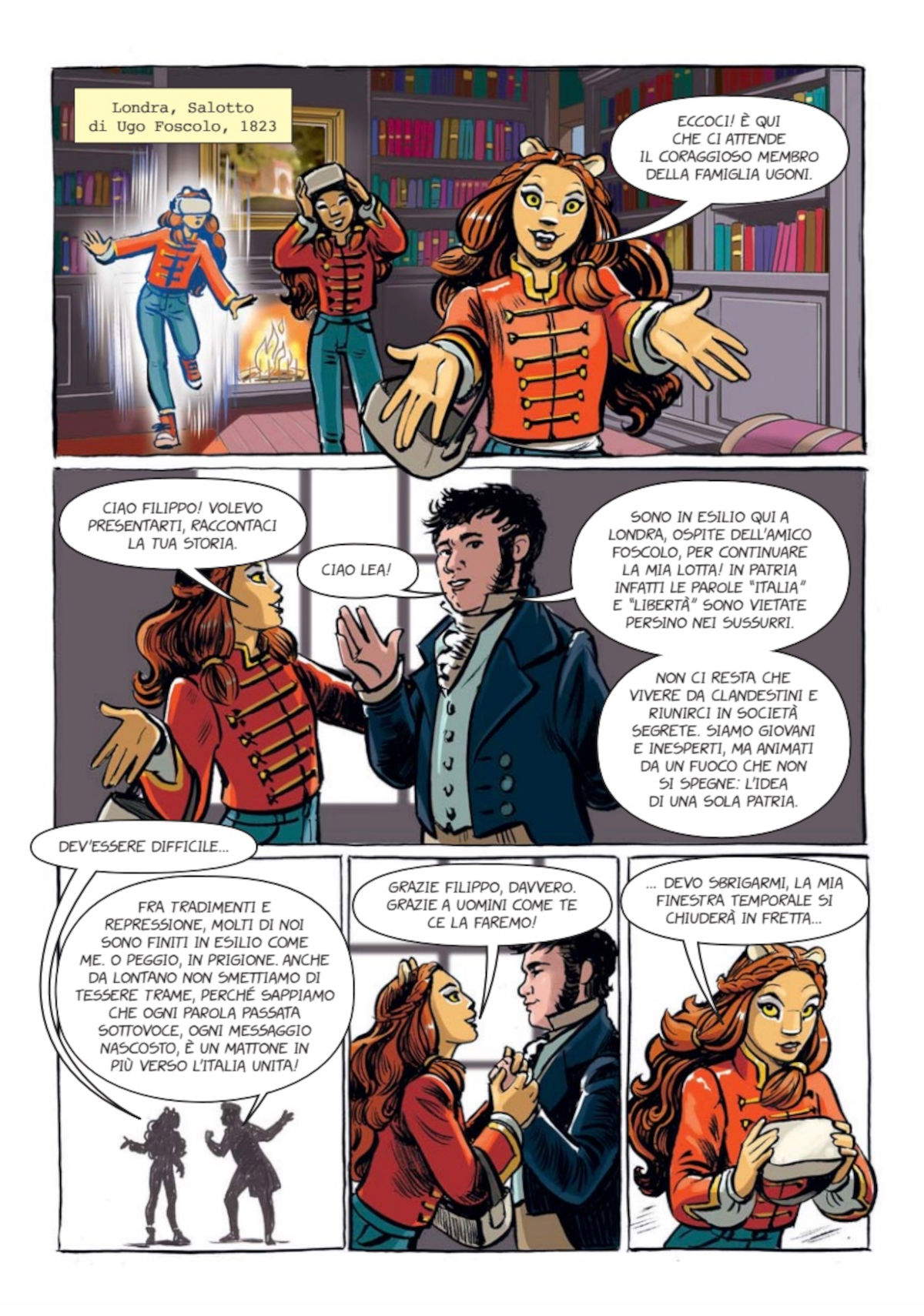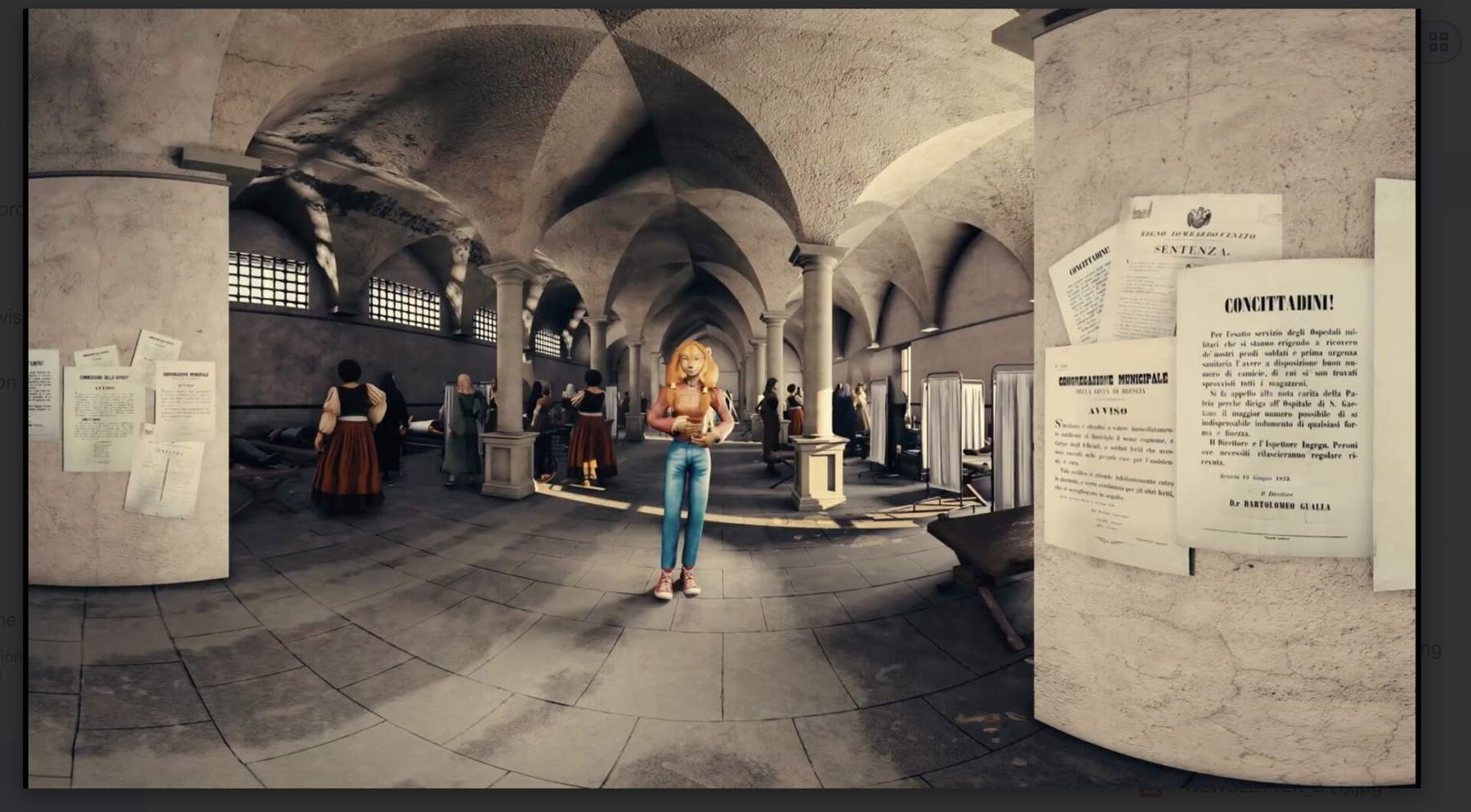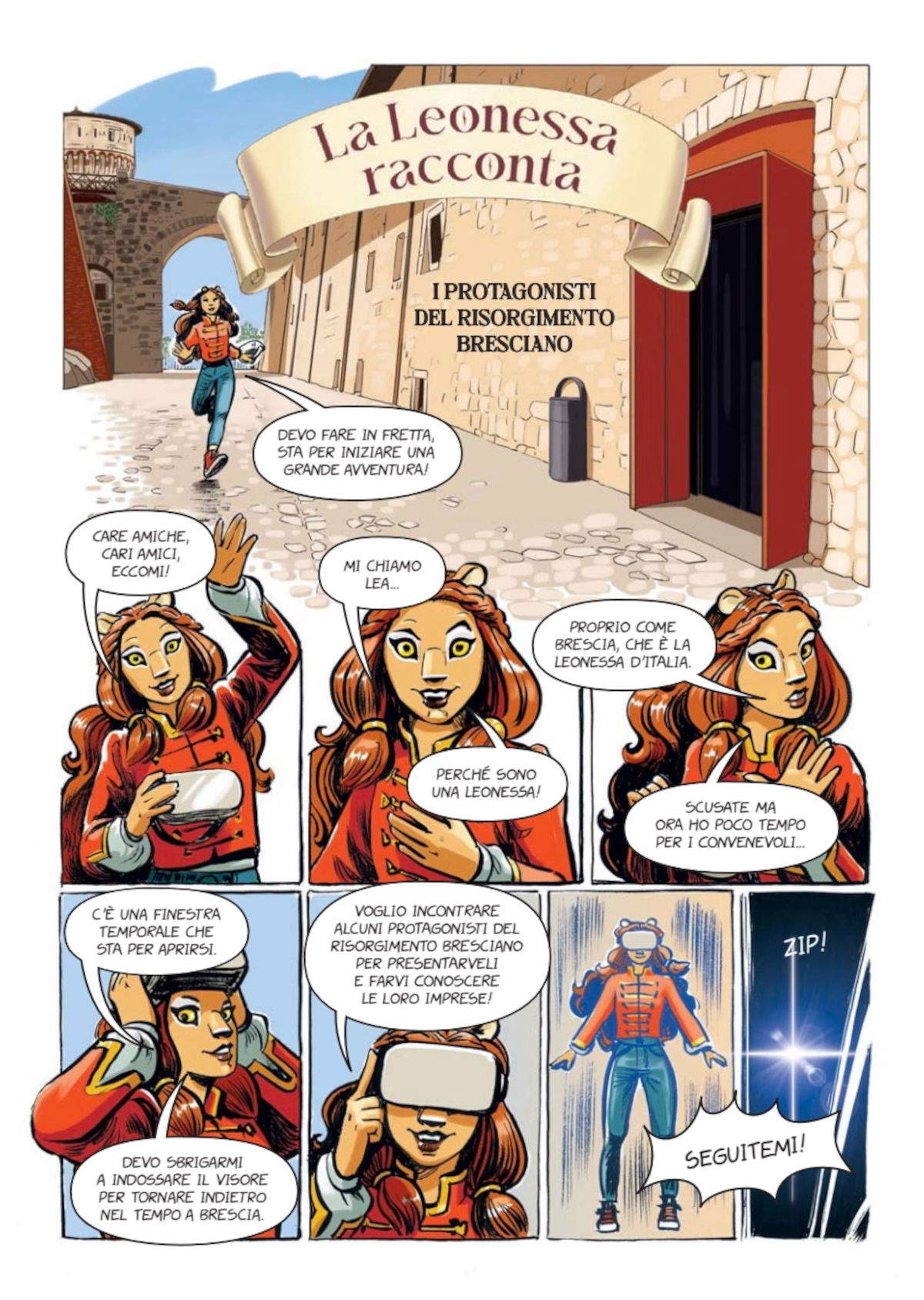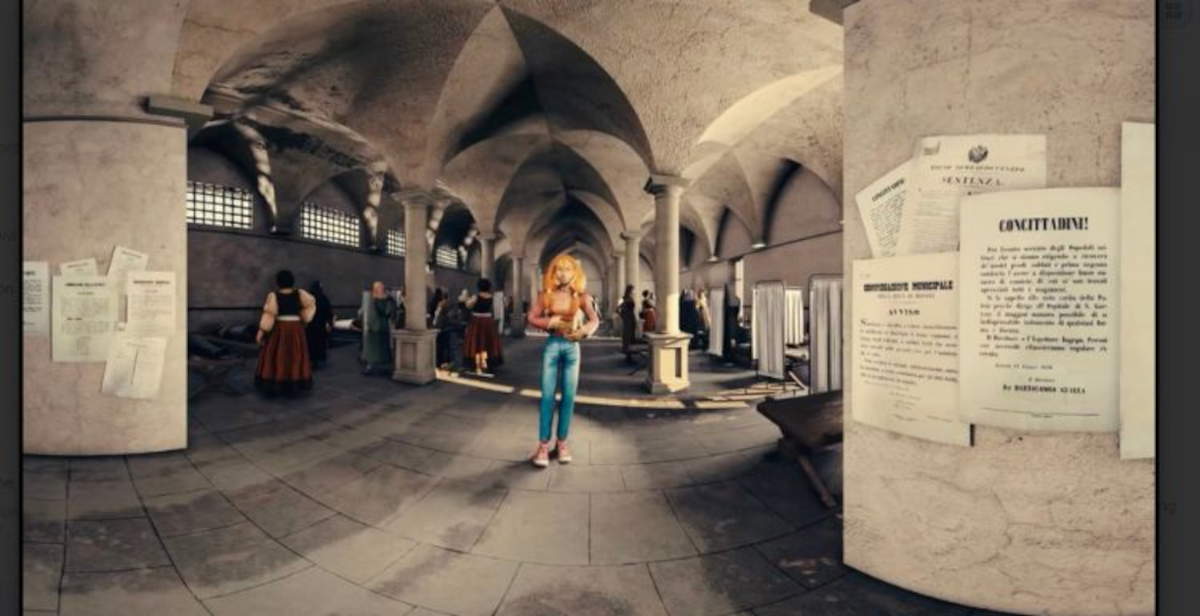The history of the Risorgimento meets virtual reality. Starting in October 2025, the Brescia Museum of the Risorgimento “Lioness of Italy” will offer four new immersive tours, brought together in the Risorgimento VR Experience project. This is an initiative promoted by Fondazione Brescia Musei together with Way Experience and Beside, which obtained support from the Lombardy Region under the InnovaCultura call for proposals, funded by the ERDF Regional Program 2021-2027. The aim is to combine historical memory and technological innovation, bringing younger people in particular closer to knowledge of Risorgimento events. The Museum of the Risorgimento, reopened in 2023 after eight years of closure thanks to an intervention supported by the Lombardy Region and Fondazione Cariplo through the call for Major Emblems 2020, is thus part of a path of renewal that focuses on new ways of use. The idea is to make the content accessible to non-specialist audiences as well, involving new generations through digital tools capable of restoring the atmosphere of an era and the complexity of the events that led to national unity.
The project offers four virtual reality experiences, each dedicated to an emblematic protagonist or episode of the Risorgimento. Fratelli ribelli is narrated through the figure of Filippo Ugoni, a Brescian intellectual committed to the patriotic cause. A Hero’s Day is given to Tito Speri, symbol of the Ten Days of Brescia in 1849. On the other hand, The Immense Hospital traces the vicissitudes of Felicita Bevilacqua, a noblewoman from Verona who supported the city during the insurrection, while The Expedition of the Thousand follows the gaze of Giuseppe Nodari, a doctor and Garibaldi volunteer. Each route is constructed as an immersive storytelling that weaves together accurate historical reconstructions, archival documents and anecdotes.

A central aspect concerns inclusivity. The experiences are also accessible to deaf people thanks to the integration of content in LIS. In addition, specific software allows for easy fruition that can be adapted to the different needs of visitors. The intent is to ensure democratic and participatory access to historical memory, enhancing the educational dimension of the museum. The narrative is led by a new character created by Elisabetta Dami, an author known for giving birth to Geronimo Stilton. After lending her pen to the digital project that made the city’s museum collections more accessible, Dami now introduces the Lioness Lea: an anthropomorphic character, dressed in jeans and a Risorgimento jacket, who accompanies the young audience between seriousness and lightness. The choice recalls the symbol of Brescia as the “Lioness of Italy” and intends to transform the visit into a narrative experience capable of conveying values and reflections beyond the purely historical fact. The use of virtual reality also makes it possible to open normally inaccessible materials to the public. Archival documents and artifacts stored in repositories become an integral part of the immersive videos, enriching the narrative with additional levels of reading. This approach ties in with the museum philosophy inaugurated with the 2023 reopening, based on three main axes: material artifacts, artworks, and digital collections. A combination that makes it possible to maintain rootedness in history while expanding the tools by which memory is transmitted.
“I am happy to participate in this beautiful project, which combines innovation and profound values, breathing new life into history and bringing it closer to the public,” says Elisabetta Dami. “With the lioness Lea, I wanted to contribute to making the Brescia Museum of the Risorgimento a living place, where history dialogues with the present and visitors feel like protagonists of their own path of discovery. Because culture, when it speaks to the heart, becomes an adventure that never ends.”
“’La Leonessa racconta’ was born from a simple but very powerful idea: to allow visitors not only to listen to history, but to experience it,” says Francesca Biagioli, Founder of Beside Books and Marco Pizzoni, Founder of Way Experience. “The work we have done transforms the museum visit into an immersive and participatory experience, in which the public no longer just observes history, but goes through it, feels it and lives it firsthand.”

The realization of the project involved different expertise. Way Experience and Beside developed the innovative technologies and storytelling, while the Educational Services of Fondazione Brescia Musei handled the historical and artistic content. Elisabetta Dami, on the other hand, designed the new narrative character, with the aim of offering a familiar and accessible point of view to children and young people. The result is a narrative and technological device that expands the museum’s cultural offerings, opening them up to schools, families, tourists and the adult public. Alongside the digital experience, an unpublished comic book has been created, illustrated by Silvia Bigolin and edited by Fondazione Brescia Musei. The volume, intended for teachers but also available to the public, incorporates the visual languages of the VR project and delves into the stories of the four protagonists. With a direct and informative style, the comic book is proposed as a parallel tool to bring different targets closer to the same historical narrative.
The Risorgimento VR Experience is part of a program that Fondazione Brescia Musei dedicates to the Risorgimento Museum and Brescia Castle. In 2025, the calendar included numerous initiatives aimed at delving into characters and themes related to the 19th century and the legacies left by the Risorgimento movement. From April 1 to June 29 was the exhibition-dossier Tito Speri. Objects of a Conspirator of the Risorgimento, which collected memorabilia belonging to the Brescian patriot. As part of the 80th anniversary of the Liberation, the museum hosted from April 24 to June 8 a selection of objects from the civic collections related to the Resistance, part of the national project Resistant Materials. Museums, Objects, Narratives in the 80th Anniversary of Liberation, promoted by the ICOM Musei Storici group in collaboration with the Ferruccio Parri National Institute and the Paesaggi della Memoria network. Also for April 25, Fondazione Brescia Musei curated a program of events dedicated to the partisan movement, coordinated by Marco Merlo and Giulia Paletti, curators of the Museo delle Armi “Luigi Marzoli” and the Museo del Risorgimento, respectively.
The series of initiatives also included the history course Garibaldi Beyond History - The Icon, the Myth, the Tale, held in May by historians Carlo Bazzani and Michele Magri, with the participation of numerous university professors from various Italian universities. In June, on the other hand, an exhibition was inaugurated with two drawings by Antonio Tagliaferri and Angelo Inganni dedicated to the monument to Arnaldo da Brescia, as part of the city review Arnaldo. Martyr and Rebel. The program will continue on Nov. 18 with an exhibition of an original dress that belonged to Anita Garibaldi. The initiative aims to bring attention back to a figure often reduced to the role of the hero’s companion, but who had an autonomous and relevant path in the political and military events of her time. Through the new VR project, comics, exhibitions and collateral initiatives, the Brescia Museum of the Risorgimento presents itself as a laboratory of memory and innovation. A place where historiographic tradition coexists with contemporary narrative tools to offer a broader and more inclusive reading of a period that continues to influence the country’s history and identity.

“This project,” says Francesco Tomasini, Brescia City Councilor with responsibility for Cultural Activities, “represents a virtuous example of how technological innovation can bring the past into dialogue with the present, offering new tools for understanding and enhancing our history. With Risorgimento VR Experience, the Museo del Risorgimento Leonessa d’Italia confirms itself as a lively and accessible place, capable of speaking to citizens of all ages, especially the youngest, who today more than ever need narrative tools capable of exciting, involving and making people think. As the Municipality of Brescia, we are proud to support initiatives like this, which strengthen the role of culture as an engine of development, inclusion and growth for our community. We thank Fondazione Brescia Musei and all the partners involved for believing in this challenge, bringing our city to be once again a point of reference in the Lombard and national cultural scene.”
“It is a pleasure to bring my greetings and those of the Lombardy Region on the occasion of this initiative, which confirms how much culture, when it knows how to innovate, can really become an engine of growth for the territory,” says Francesca Caruso, Lombardy Region Councillor for Culture. “With this project Brescia once again reaffirms that it is in the vanguard: a city, a province capable of telling history with the tools of the present, making it alive, current, exciting and accessible to all. This is also the idea of culture in which we believe: a culture that does not just preserve, but experiments and speaks to younger people without losing depth and value. Through the InnovaCultura call for proposals, we wanted to invest in a precise idea: a culture that does not ”fear“ the future but, rather, combines technology with the immense and precious heritage at its disposal, creativity with enterprise, transforming beauty into an opportunity for growth for all of Lombardy. It is also from here that the cultural competitiveness of our region passes. I would like to thank Fondazione Brescia Musei - in particular its president Francesca Bazoli and director Stefano Karadjov - and all those who helped shape an exemplary project, combining expertise, passion and vision. Brescia-the ’Lioness of Italy’-thus proves that innovation and tradition are not two opposing paths, but the same direction when one has the courage to believe in them.”
“With its reopening in 2023,” says Stefano Karadjov, Director, Fondazione Brescia Musei, “the Museo del Risorgimento Leonessa d’Italia has established itself as an example of historical storytelling in a contemporary key. Thanks to a renovated museological layout, it is now an educational and participatory space, where storytelling stimulates critical reflection and strengthens civic consciousness. Fondazione Brescia Musei has always been committed to the enhancement of this symbolic place, the heart of Brescia Castle and a witness to the city and national identity. With the ’Risorgimento VR Experience’ project, winner of the Lombardy Region’s InnovaCultura call for proposals, we wanted to bring forward a vision of the museum as an accessible, dynamic and innovative space. Virtual reality immersive experiences - designed especially for the new generations - represent a powerful tool to bring the public closer to history, making it engaging, exciting and inclusive. We are convinced that culture should be an engine of social and civic growth. In this perspective, the Museum of the Risorgimento is not only a place of memory, but a laboratory of citizenship, where historical heritage is transformed into a living and shared experience.”
 |
| At Brescia's Museum of the Risorgimento, four paths in VR to tell the story of the 19th century |
Warning: the translation into English of the original Italian article was created using automatic tools. We undertake to review all articles, but we do not guarantee the total absence of inaccuracies in the translation due to the program. You can find the original by clicking on the ITA button. If you find any mistake,please contact us.